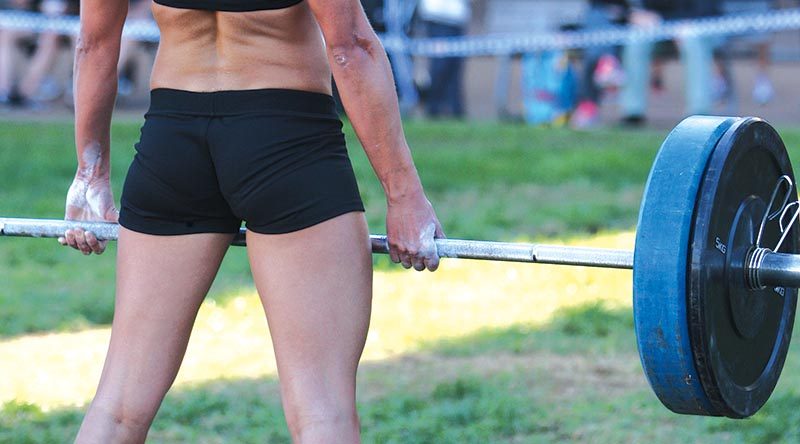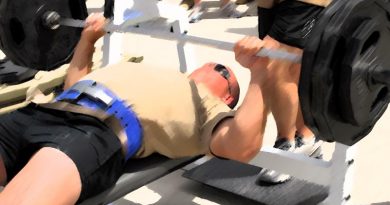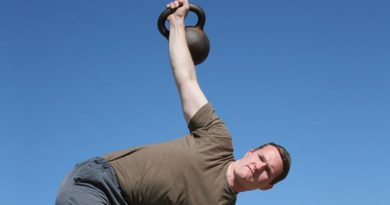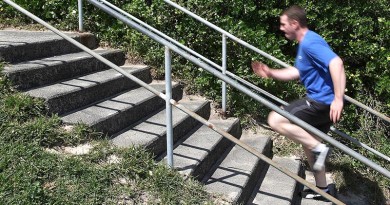Military Fitness – Part 28

 In day-to-day life, and particularly in the military, very few things are as useful or as important as having a strong back.
In day-to-day life, and particularly in the military, very few things are as useful or as important as having a strong back.
From picking up your kids to lifting heavy equipment, a strong back is vital both for the performance of all sorts of tasks and for keeping your back and the rest of your body safe from injury.
Unfortunately, most people, military personnel included, fail to train their backs adequately and therefore many people end up with acute or chronic back injuries that can severely hamper performance.
In this article, I’m going to outline some very basic steps that anyone from an office-bound worker to an SF operator can implement to vastly reduce their chances of ending up as a bad-back statistic.
First up, let’s look at the two major causes of back problems, one of which might surprise you.
The most obvious culprit in a severe and acute back injury is trying to lift something heavy without having the base strength to do so safely. This leads to an overload of the muscles, tendons and ligaments that support the spine and this in turn leads to a disc herniation, muscle or ligament tear or one of a number of other acute problems.
The second and less obvious cause of a huge number of back problems is sitting. That’s right, sitting for hours a day at a chair or in a vehicle leads to a series of problems including tight hip flexors, weak inactive glutes and weak hamstrings that can then easily be aggravated by lifting even the lightest objects or twisting the wrong way.
So how do we avoid these two problems?
The answer is pretty simple and, no matter what your situation, you should follow all of the following steps – unless you already have a back injury – in which case, seek and abide by medical advice.
Get Mobile – If you are stuck in an office chair all day or do a lot of running and other repetitive exercise, chances are you have developed range-of-motion limitations in your hips and lower back.
If you have to sit a lot, try to take regular breaks where you stretch out a bit and walk around.
In addition, EVERYONE should buy a foam roller and perform regular sessions of rolling out their lower back and legs as well as performing basic hip flexor, quad, hamstring and glute stretches.
This step alone has the potential to solve a large number of cases of back tightness and back pain.
Get Moving – Once you have started to address range-of-motion limitations, you will need to get the muscles in your back and your entire posterior chain working and activated again.
You can achieve this by doing things such as running, rowing or bodyweight exercises – but the simplest and most effective way to get good results in this area is to do kettlebell swings, and lots of them.
I suggest starting with 100 swings in a session and then add 10 or 20 reps to each session until you are routinely performing 300 or more swings in a session.
Some time ago, I took a challenge to do 10,000 reps of swings in a month and, by the end of the month, not only were my back and legs as strong and resilient as steel, I’d also dropped about 5kg without worrying too much about my diet.
Get Strong – After a month of mobility work and kettlebell swings it’s time to get strong, really strong.
In the gym, back work is often neglected because it’s hard work without much in the way of visual reward.
I used to do some training in a commercial gym and the ratio of people pumping their guns to those doing serious back training ran at about 10 to 1 on a good day.
If you want to ensure that your back stays strong and healthy, then you need to focus on three back exercises.
Deadlift – No arguments, no exceptions, deadlifts are the king of back strengthening exercises.
If you want to get a strong back you need to work up to at least a double-bodyweight deadlift for guys and at least 1.5 times bodyweight for women.
I see all sorts of stupidity when it comes to deadlifting, so here are some basic guidelines.
1. Start light and keep good form and posture. Make sure you deadlift all the way from the ground to a full lockout and keep the neutral arch in your spine the whole time.
2. Make each rep distinct. Yes, sometimes you can lift more weight for more reps by bouncing the bar off the floor, but this is asking for a lower-back blow out.
3. Keep the reps low. Start with 3 x 5 and, as the weight creeps up, move to sets of 3 and even sets of 2. Long sets of deadlifts are occasionally useful but in general they invite stabiliser fatigue.
Rows – Dumbell or seated cable rows build strength and endurance in the middle and upper back and assist with maintaining correct posture. They also tie in to the top of the deadlift.
Back extensions – Start with sets of 15 to 20 without weight and try to work up to some heavier sets of 10.
There you have it – a simple plan to improve your functional strength and dramatically reduce your risk of back injury!
.
.
.
.

.
.






